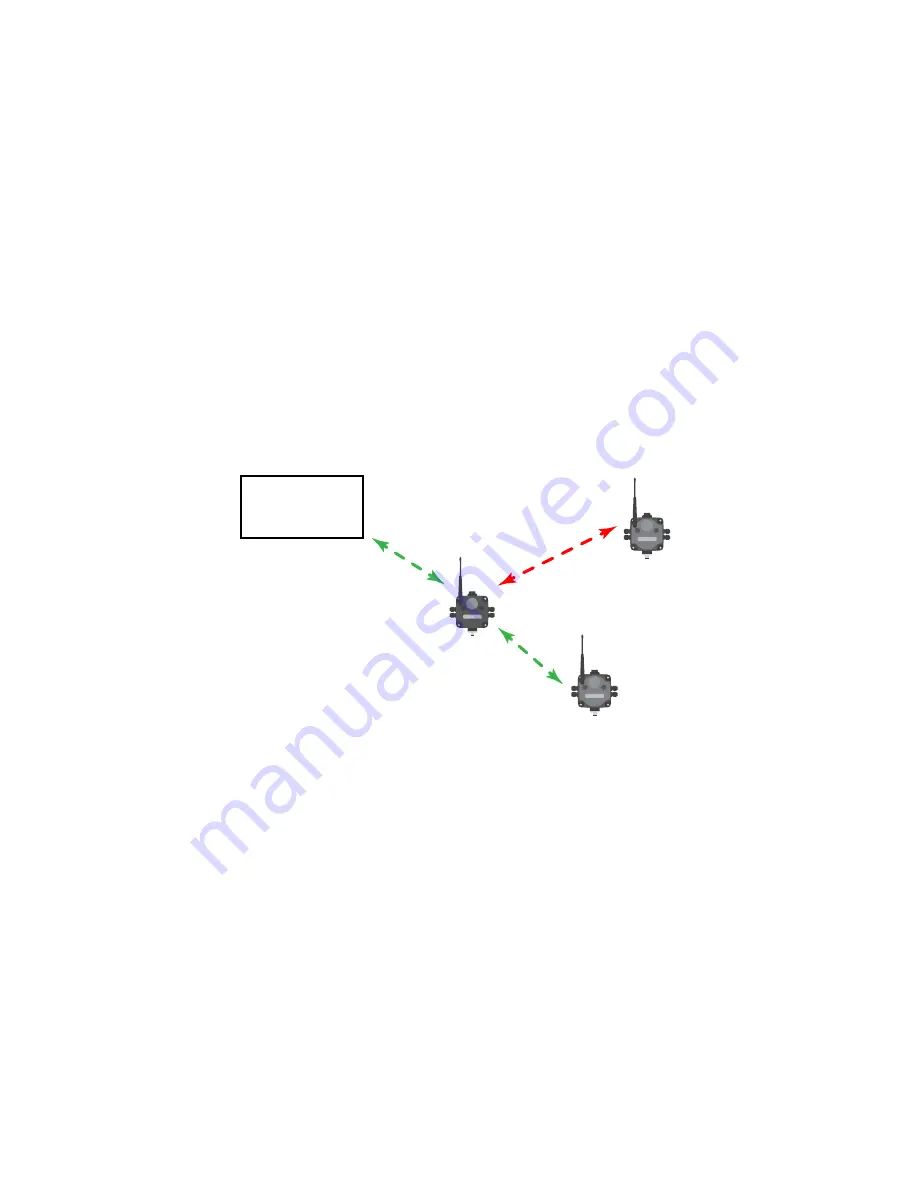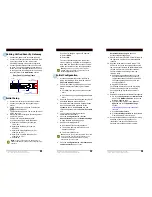
The Gateway places an error code in its I/O 8 register and sends a message to all relevant Nodes within the system to set
outputs to the user-defined default states. Each Node has an enable flag for a host link failure condition. If a Node’s ‘host
link failure’ flag is not set, the outputs on the Node are not affected.
In the example shown, a host link failure between the host system and Gateway result in the outputs of Node 1 and Node 2
sent to the defined conditions if both Nodes have the host link failure enabled. When the host link failure is enabled, you
should disable the automatic recovery. The host system should restart the system after the error condition is corrected.
5.11.2 Gateway Link Failure
Gateway link failures are determined by three global parameters: polling interval, maximum missed message count, and re-
link count.
The polling interval (or rate) defines how often the Gateway communicates with each Node to verify the radio link is
operating. The Gateway increments a Node’s missed message count if a Node does not immediately report back from a
polling request. If a Node’s missed message count exceeds the maximum missed message count, the Gateway generates a
timeout error in the Modbus I/O 8 register of the appropriate Node.
The auto-recover feature uses the re-link count parameter. If enabled, the error condition heals itself if the Gateway and
Node have successfully exchanged N-number of good polling messages. The N-number is the re-link count, or the number
of messages required to re-establish a radio link.
When the Node’s Gateway Link Failure flag is set and the Gateway determines a timeout condition exists for a Node, any
outputs linked from the failing Node are set to the user-defined default state. Each Node has a Gateway Link Failure flag
that can be set or cleared depending on the particular application.
Host System
Gateway
Node 1
Node 2
In the sample system shown, the communication link between the Gateway and Node 1 has failed. Node 2 must have its
Gateway Link Failure flag set to allow any outputs linked to Node 1 to be set to the defined default state when the
communication link between Node 1 and the Gateway fails.
5.11.3 Node Link Failure
A Node Link Failure is determined by the polling interval/rate or the out-of-sync timing.
When a Node detects a communications failure with the Gateway and the Node Link Failure flag is set, the output points are
set to the user-defined states and the inputs are frozen. When output points are set to their default states because of an
error condition, only the Gateway can clear the error condition and resume normal operation. The front panel buttons or the
Gateway’s register I/O 15 clear error conditions.
Clearing a lost radio link error does not restore communications. Banner recommends determining and resolving the cause
of the radio link error, then allowing the system to auto-recover the lost communications.
Polling Interval. The global polling interval defines the time interval during which the Node should expect a polling request
from the Gateway.
Out of Sync. An out of sync condition is met when a Node fails to receive the Gateway’s beacon within a factory-set time
period, about 10 seconds. Both the out of sync and polling interval conditions are used to detect a failure because the Node
can remain in sync with the Gateway but be unable to transmit data. If the Gateway drops out of the network, the Nodes
detects the out of sync condition long before the polling interval expires.
Sure Cross
®
Performance DX80 Wireless I/O Networks
46
www.bannerengineering.com - Tel: + 1 888 373 6767
















































